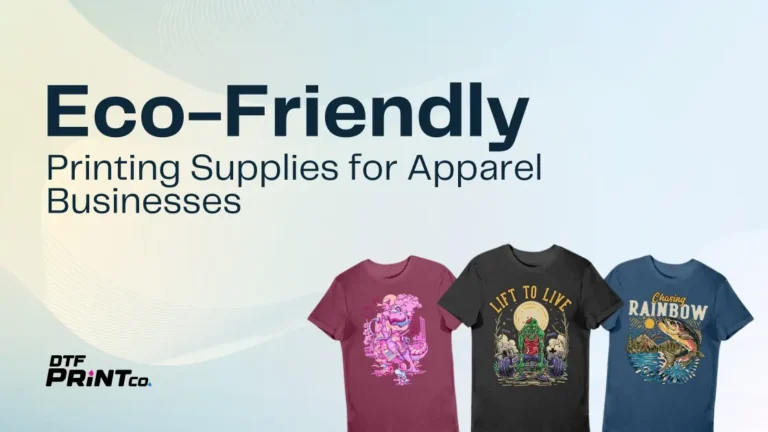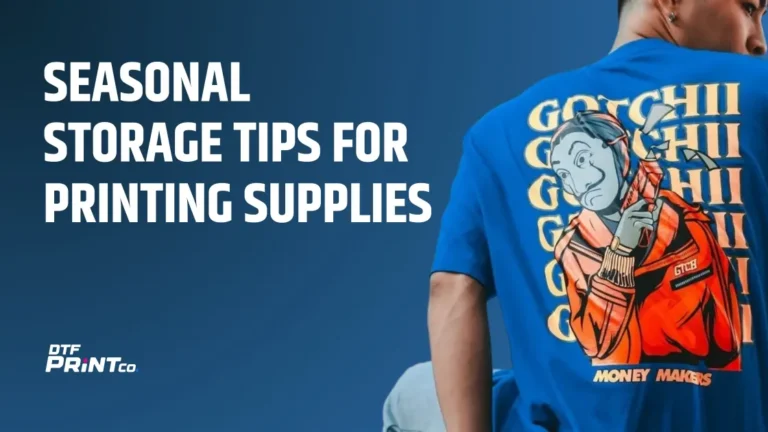In the dynamic world of custom apparel printing, achieving professional-quality results without a hefty investment is a common challenge. Direct-to-Film (DTF) printing has emerged as a versatile and cost-effective solution, enabling vibrant designs on various fabrics. But what if you could further reduce costs without compromising quality? Enter the innovative DTF hack: using sublimation ink with DTF film. This approach allows you to leverage existing sublimation equipment to produce high-quality prints on cotton and other fabrics, minimizing expenses and maximizing output.
Understanding DTF Printing
What is DTF Printing?
Direct-to-Film (DTF) printing is a process where designs are printed onto a special film and then transferred to fabric using heat and pressure. Unlike Direct-to-Garment (DTG) printing, which applies ink directly to the fabric, DTF printing involves an intermediate film, offering greater versatility and ease of use. This method is particularly advantageous for small to medium-sized print runs, providing high-quality results on a variety of materials.
Advantages of DTF Printing
- Fabric Versatility: DTF printing works on cotton, polyester, blends, and more, making it suitable for diverse applications.
- No Pre-Treatment Required: Unlike DTG, DTF doesn’t necessitate pre-treating garments, saving time and resources.
- Vibrant and Durable Prints: The use of specialized inks and adhesive powders ensures bright, long-lasting designs.
- Cost-Effective for Small Batches: Ideal for custom orders and limited runs, DTF offers a budget-friendly solution without sacrificing quality.(KM Customs)
Setting Up a Budget-Friendly DTF Printing System
Essential Equipment and Materials
To implement the DTF hack using sublimation ink, you’ll need:
- Sublimation Printer: An existing sublimation printer (e.g., Epson EcoTank series) can be adapted for DTF printing.
- DTF Transfer Film: Specialized films designed to hold the printed design before transfer.
- DTF Adhesive Powder: A fine powder that binds the ink to the fabric during the heat transfer process.
- Heat Press Machine: Essential for curing the adhesive powder and transferring the design onto the garment.
- Protective Gear: Gloves and masks are recommended when handling adhesive powders to ensure safety.(Printyguru)
Cost-Saving Tips
- Utilize Existing Equipment: Repurpose your sublimation printer for DTF printing to avoid additional investments.
- Bulk Purchasing: Buy DTF films and adhesive powders in bulk to reduce per-unit costs.
- DIY Maintenance: Regularly clean and maintain your equipment to extend its lifespan and prevent costly repairs.
- Optimize Designs: Arrange multiple designs on a single film sheet to maximize material usage and minimize waste.
The DTF Hack: Using Sublimation Ink with DTF Film
How It Works
This innovative approach involves using sublimation ink—traditionally used for polyester fabrics—with DTF film to print on cotton and other materials. Here’s a step-by-step guide:
- Design Preparation: Create or select your design and mirror it using graphic design software.
- Printing: Load the DTF film (matte side up) into your sublimation printer and print the mirrored design.
- Adhesive Application: While the ink is still wet, evenly apply DTF adhesive powder over the design. Shake off excess powder.
- Curing: Use a heat press or curing oven to melt the adhesive powder onto the ink. This typically involves hovering the heat press over the film at 320°F (160°C) for 2-3 minutes.
- Transfer: Place the cured film onto the fabric and press at 320°F (160°C) for 15 seconds. Allow it to cool before peeling off the film.
- Final Press: To enhance durability, perform a final press with a Teflon sheet over the design for 10 seconds
Benefits and Considerations
Pros:
- Cost Efficiency: Utilizing sublimation ink reduces the need for specialized DTF inks, lowering overall expenses.
- Equipment Utilization: Allows for the use of existing sublimation printers, minimizing additional investments.
- Fabric Compatibility: Enables printing on cotton and other non-polyester fabrics, expanding product offerings.
Cons:
- Color Limitations: Sublimation inks lack white ink, making it challenging to print on dark fabrics without a white base layer.
- Durability Concerns: Prints may not be as durable as those produced with traditional DTF inks, especially after multiple washes.
- Learning Curve: Achieving optimal results may require experimentation with settings and materials.
Maximizing Quality While Minimizing Costs
Optimizing Print Settings
- Ink Saturation: Adjust ink saturation levels to prevent over-inking, which can lead to smudging and increased costs.
- Print Resolution: Use high-resolution settings to ensure sharp, detailed designs.
- Color Profiles: Implement appropriate color profiles to maintain color accuracy across different fabrics.
Maintenance and Troubleshooting
- Regular Cleaning: Clean printheads and other components regularly to prevent clogs and maintain print quality.
- Adhesive Powder Handling: Store adhesive powders in a dry environment and handle them carefully to prevent clumping.
- Test Prints: Conduct test prints to fine-tune settings and identify potential issues before full-scale production.
Real-World Applications and Success Stories
Case Studies
Small Business Implementation:
A home-based apparel business integrated the DTF hack using their existing sublimation printer. By adopting this method, they expanded their product line to include cotton T-shirts, resulting in a 30% increase in sales within three months.
Educational Institutions:
A university’s design department utilized the DTF hack for student projects, allowing for cost-effective production of custom designs on various fabrics. This approach provided students with hands-on experience in textile printing without significant financial investment.
Frequently Asked Questions
Is DTF printing suitable for all fabric types?
While DTF printing is versatile, the sublimation ink hack is most effective on light-colored cotton fabrics. Dark fabrics may require additional steps, such as applying a white base layer, to achieve vibrant results.
Can I use any sublimation ink for the DTF hack?
Not all sublimation inks are created equal. It’s recommended to use high-quality inks compatible with your printer model to ensure optimal results.
What are the long-term effects on print durability?
Prints produced using the DTF hack may experience some fading or wear over time, especially after multiple washes. Implementing a final press and proper curing can enhance durability.
Conclusion
The DTF hack of using sublimation ink with DTF film presents an accessible and cost-effective solution for producing high-quality prints on cotton and other fabrics. By leveraging existing equipment and materials, businesses and hobbyists can expand their offerings without significant financial outlay. While there are considerations regarding color vibrancy and durability, careful implementation and experimentation can yield impressive results.






